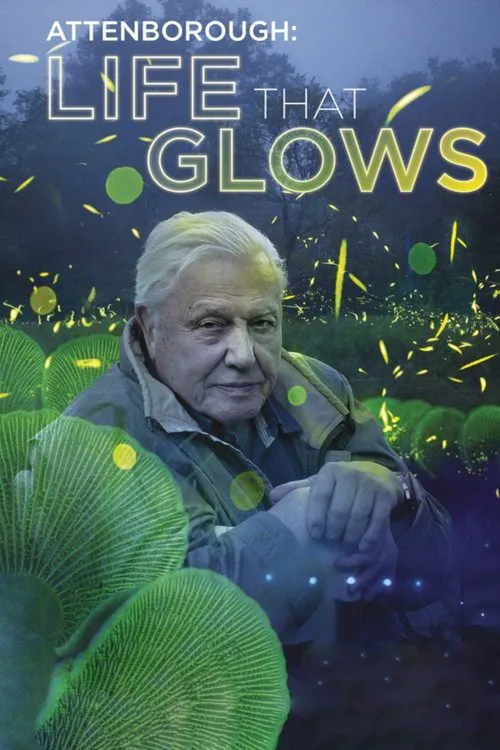Attenborough's Life That Glows

Plot
In "Attenborough's Life That Glows," Sir David Attenborough embarks on an extraordinary journey to uncover the mysteries of creatures that have fascinated humans for centuries - those that possess an internal light, commonly referred to as bioluminescence. From the enchanting spectacle of a firefly's glow to the mesmerizing display of bioluminescent plankton in the ocean, Attenborough delves into the fascinating world of living lights, accompanied by a team of renowned scientists and deep-sea explorers. The documentary commences with a captivating scene of fireflies on a warm summer evening, their lights flashing like tiny candles in the darkness. As Attenborough observes these creatures, he wonders about the purpose behind their ability to produce light from within. Is it for attracting a mate, warning off predators, or perhaps communicating with other fireflies? These questions are just the beginning of the inquiry that Attenborough and his team embark on, seeking answers that have puzzled scientists for centuries. As the journey progresses, the focus shifts to the ocean, where bioluminescent creatures thrive in the darkest depths. The team, including deep-sea explorer Jean-Michel Cousteau, descends into the darkness of the abyss, where they discover an array of ethereal beings, including bioluminescent fish, jellyfish, and plankton. The camera captures these creatures in exquisite detail, revealing the intricate mechanisms behind their internal lights. One of the most astonishing moments in the documentary comes when the team encounters a swarm of bioluminescent plankton, known as dinoflagellates. As they move through the water, these tiny organisms emit a brilliant blue glow, creating a shimmering spectacle that is at once magical and scientific. This phenomenon, known as "sea sparkles," is a result of the dinoflagellates' ability to produce light in response to the movement of predators or the presence of potential mates. Attenborough and his team soon discover that bioluminescence is not a simple adaptation, but a complex phenomenon with multiple functions. They learn that different species use light in various ways, such as to camouflage themselves, to attract prey, or to defend against predators. The documentary also explores the diverse mechanisms behind bioluminescence, including the use of luciferin-luciferase reactions, chemical reactions that produce light as a byproduct. Throughout the documentary, Attenborough weaves a narrative that is both scientific and poetic, bringing the creatures of the bioluminescent world to life in a way that is both informative and enchanting. He shares stories of scientists who have dedicated their lives to studying these mysterious creatures, and their discoveries have shed light on the intricate web of relationships that exist within these ecosystems. One of the most compelling aspects of "Attenborough's Life That Glows" is its exploration of the role that bioluminescence plays in the lives of these creatures. The documentary shows how bioluminescence can be a vital tool for survival, helping creatures to communicate, attract mates, or evade predators. At the same time, it highlights the fragility of these bioluminescent ecosystems, threatened by human activities such as overfishing, pollution, and climate change. As the documentary draws to a close, Attenborough reflects on the significance of bioluminescence in our lives, both as individuals and as a species. He notes that our fascination with living lights reflects a deeper connection to the natural world, a sense of wonder and awe that inspires us to explore and learn more about the creatures that inhabit it. "Attenborough's Life That Glows" is a testament to the power of science to reveal the mysteries of the natural world, and to inspire a new generation of explorers, scientists, and conservationists to protect and preserve the fragile beauty of our planet's bioluminescent creatures.
Reviews
Recommendations




